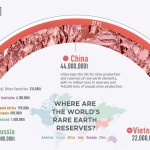Total number of posts 434.
In recent years, the US and Europe have been trying to reduce their reliance on China for goods and manufacturing. As that happens, China is turning its focus to new markets, especially in developing countries, like those in Southeast Asia.
This shift has helped China keep its export engine running, but it’s creating new challenges for Southeast Asian economies. Many local manufacturers in countries like Indonesia, Thailand, and Vietnam are now struggling to compete with a wave of low-cost goods coming from China.
China exports less to the West, more to ASEAN
Trade between China and the US or EU has been shrinking for years. In 2018, nearly 20% of Chinese exports went to the US, but by 2024 that dropped to just 14.7%. The EU saw a similar, though smaller, decline, from 17% to 14.4%. Similarly, China has actually been reducing its export dependence on other developed economies, including Japan, South Korea and Taiwan.
The chart shows proportion of China's exports to the US and the EU from 2010 to 2024.
Instead, China is sending more of its exports to countries in the Global South, especially to Southeast Asia. In 2024, 16.4% of China's exports went to ASEAN, more than to either the US or Europe.
Rerouting Exports Through ASEAN
China’s interest in ASEAN took off after the 2018 US-China trade war, which began under US President Donald Trump. To avoid high tariffs, some Chinese goods were re-routed through Southeast Asian countries before heading to the US.
Vietnam, in particular, saw a big jump in exports to the US that closely matched its increase in imports from China. This led many to believe that Vietnam was being used as a transit point for Chinese goods.
The chart shows Vietnam's incremental exports to U.S. appear to have been largely Chinese transshipments
But that loophole is closing. The US began targeting some ASEAN countries with ‘reciprocal’ tariffs to prevent this kind of export “hopping.” While these tariffs have since been delayed, several Southeast Asian governments have begun to crack down on violations of “country of origin” rules by their exporters to defend their reputations as responsible trade partners.
Finished goods are staying in ASEAN
Until recently, most Chinese exports to ASEAN were parts or materials used in local factories. Now, more and more finished products—like clothing, electronics, and furniture—are going straight to consumers in Southeast Asia, often sold through online platforms.
This is starting to hurt local industries. In Indonesia, cheap Chinese clothing imports have led to the loss of 80,000 textile jobs in 2024, with nearly 280,000 more at risk. In Thailand, over 100 small and medium-sized factories, mainly in furniture, electronics, and auto parts, have been shutting down every month from 2021 to 2024.
China is also investing in ASEAN
China isn’t just exporting goods, it’s also investing heavily in ASEAN countries, especially in electric vehicles (EVs), batteries, and solar energy, known as the “New Three” sectors. In 2024, Chinese carmaker BYD opened a factory in Thailand capable of building 150,000 EVs a year. Chinese battery giant CATL pledged a $5.8 billion investment in Indonesia’s nickel industry in 2023, though it has recently cut that amount in half.
These investments bring jobs and tech, but also disrupt local supply chains. In Thailand, a flood of EVs has caused price wars and production cuts, pushing some local auto parts suppliers out of business.
Factory activity is slowing across ASEAN
Manufacturing in the region seems to be losing steam. Across major ASEAN countries, key factory performance indicators (known as PMIs) have been dropping into negative territory, showing signs of contraction. This reflects growing concerns about both the global trade environment and the impact of rising Chinese exports.
The chart shows declining Manufacturing PMIs in large ASEAN economies
Prices are falling – and that’s not always good
Another challenge is that the arrival of so many low-priced Chinese goods is helping drive prices down in ASEAN markets. This might sound good for shoppers, but if prices fall too much, it can lead to deflation, a situation where businesses make less money, cut wages, and lay off workers.
Thailand is already seeing deflation, and countries like Malaysia and Singapore might follow soon.
The chart shows Parts of ASEAN are experiencing deflation or moving in that direction
What's next for ASEAN?
Given all these trends, ASEAN countries will need to tread carefully. To protect their economies, many may turn to strategies like encouraging more domestic spending, creating policies to support local industries, re-evaluating trade relationships with China. This could slow down efforts to deepen regional trade integration, as more countries focus on protecting their own economies first.
Source: Compiled by the Multilateral Trade Policy Department, Ministry of Industry and Trade of Viet Nam














